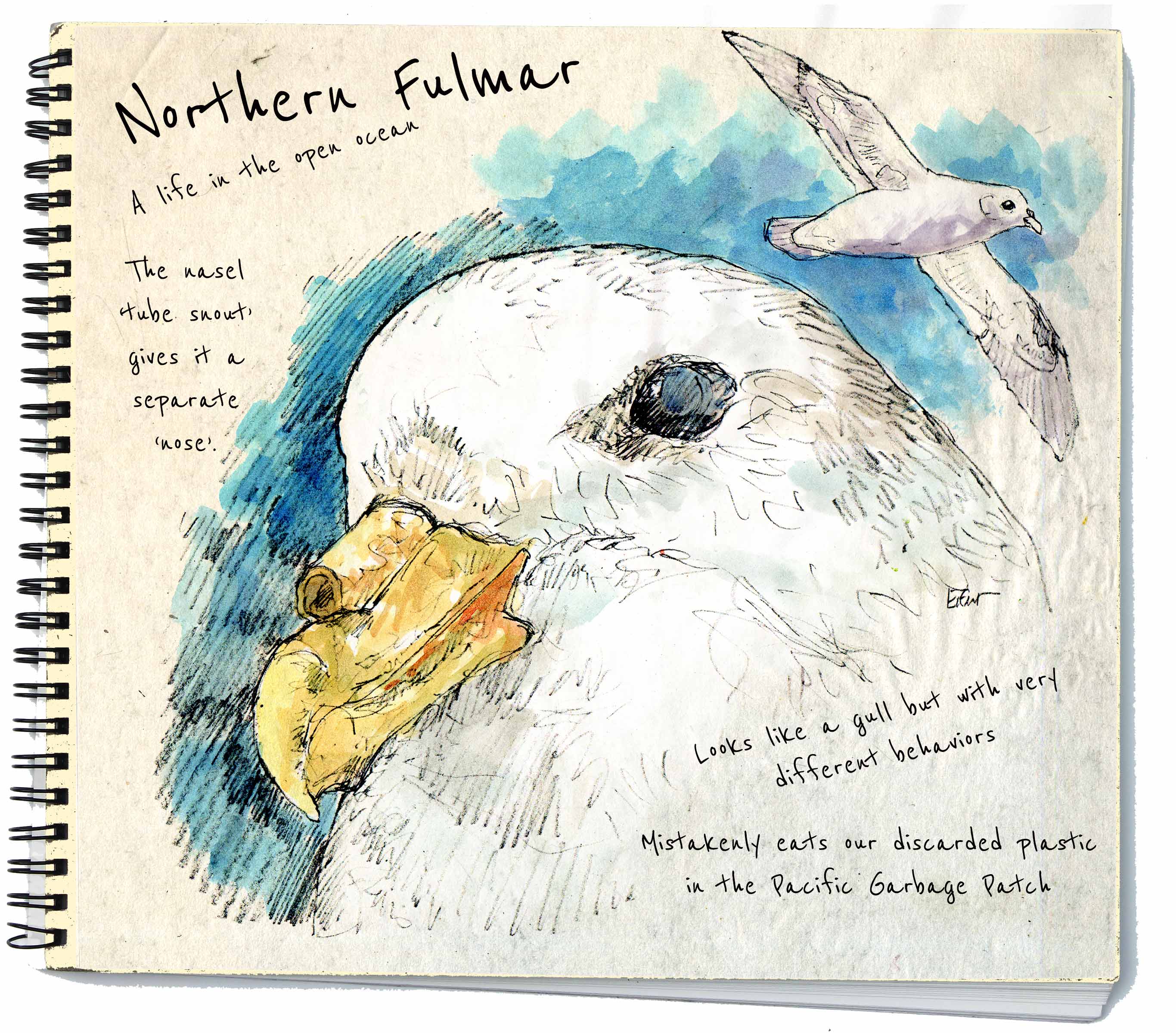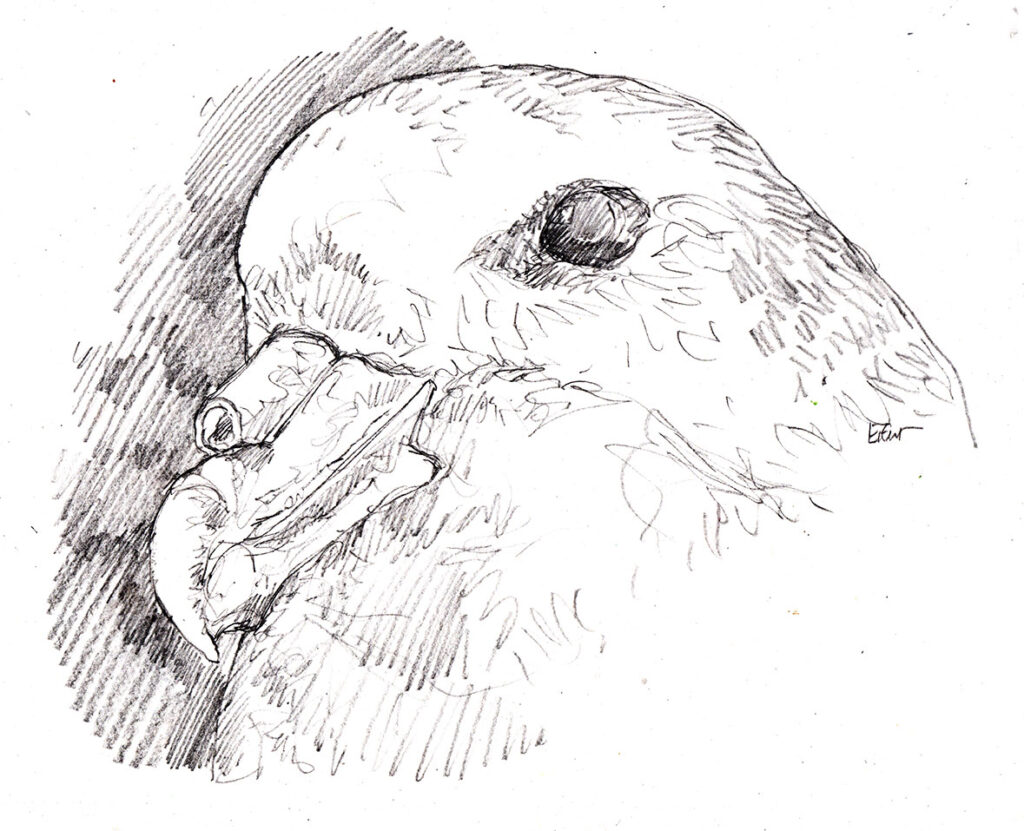Several months ago this story and art were published in my monthly page at 48 North magazine. Here’s how I started, with a pencil sketch of the bird. Notice the ‘tube bill’ air vent. An adaption to keep seawater out of it’s lungs while still holding prey in it’s open mouth.
It was subtitled “A life in the open ocean” because these birds live out in the open Pacific and far from land for most of the time. It’s a good story.
Here is the text I wrote for the sketchbook painting.
You won’t see these gull-sized birds in Elliot Bay, or as you pass Port Townsend on your way to the big sail to Mexico, but once you take the turn at Neah Bay, you’ll see plenty. They vary in color from white to gray or brown, like gulls, but their behavior is very different with stiff-wings and quick flaps to keep them airborne. Flying close to the water’s surface, they grab prey on the wing, or make quick dives for a morsel just below the surface. Fish, squid, and jellyfish are normal fair, but recently they flock behind seafood factory ships. Fulmars use island sea cliffs to breed, gathering in large colonies to make primitive nests where the female lays one egg. Young take their time maturing and do not breed until they’re 10 years old, making them extremely vulnerable to changes.
We’ve all heard of the Great Pacific Garbage Patch, the two growing vortexes of plastics floating around the center of the ocean that is currently about 600,000 square miles in size. As all this plastic grinds together out there, it breaks up into ever-smaller pieces, and guess which birds pick up pieces thinking it’s food? Fulmars fly by and grab, and swallow. Some fulmars have been found to have dozens of plastic things in their stomachs, bottle tops, little plastic shards of bigger items, junk someone bought. While the plastic doesn’t digest, it does fill up a limited space in there, making it impossible for the bird to get enough to eat – or, basically it thinks it’s always full, which, I guess it is. That bottle you carelessly toss overboard, or the plastic bag that gets blown overboard – ALL will eventually get small enough to be eaten by wildlife. Maybe a little fulmar.
Thanks for reading this week. You can sign up for emails for these posts on my website at larryeifert.com.
Larry Eifert
Here’s my Facebook fan page. I post lots of other stuff there.
Click here to go to our main website – with jigsaw puzzles, prints, interpretive portfolios and lots of other stuff.
Nancy’s web portfolio of stunning photography and paintings.
And here to go to Virginia Eifert’s website.

